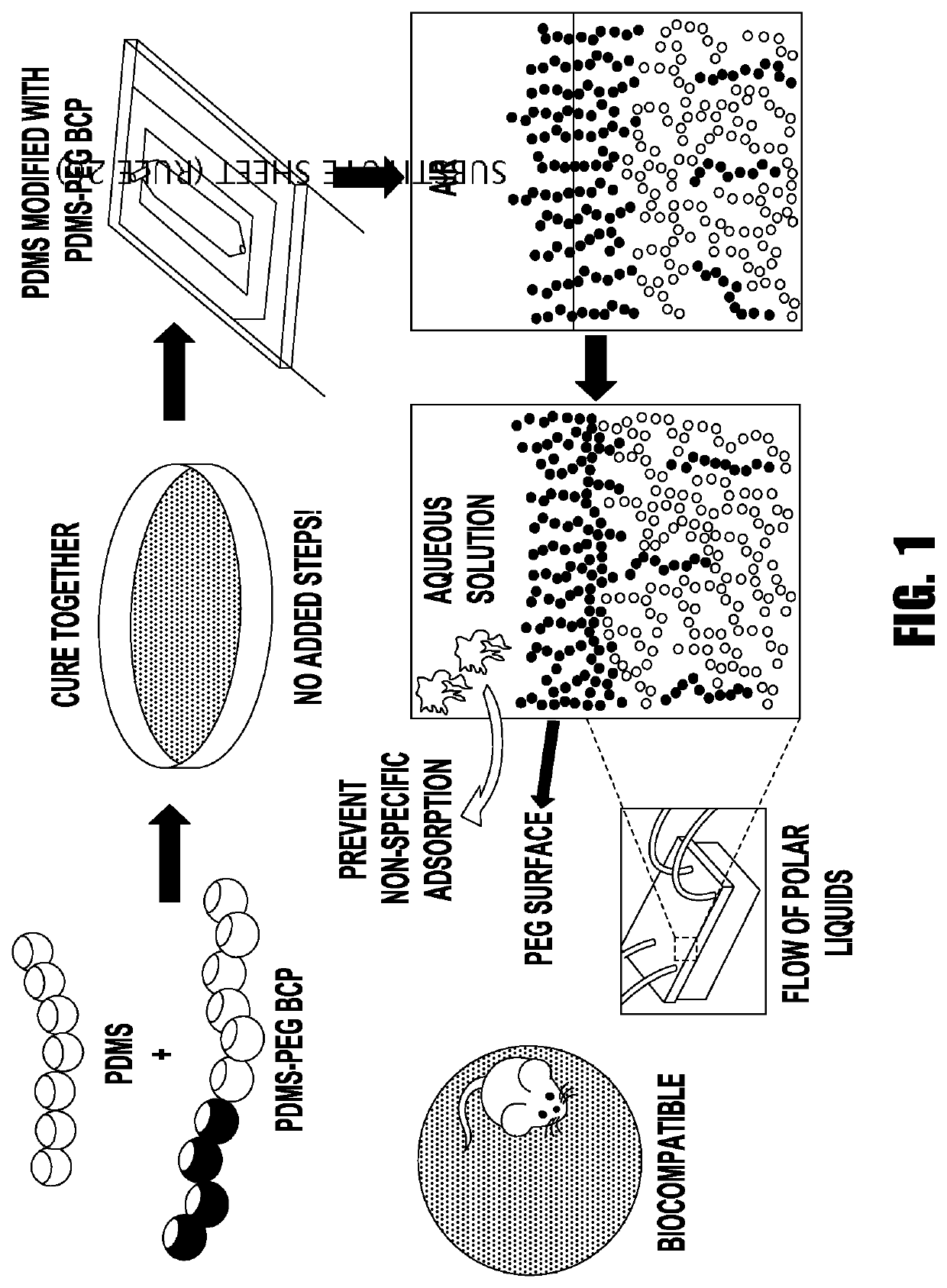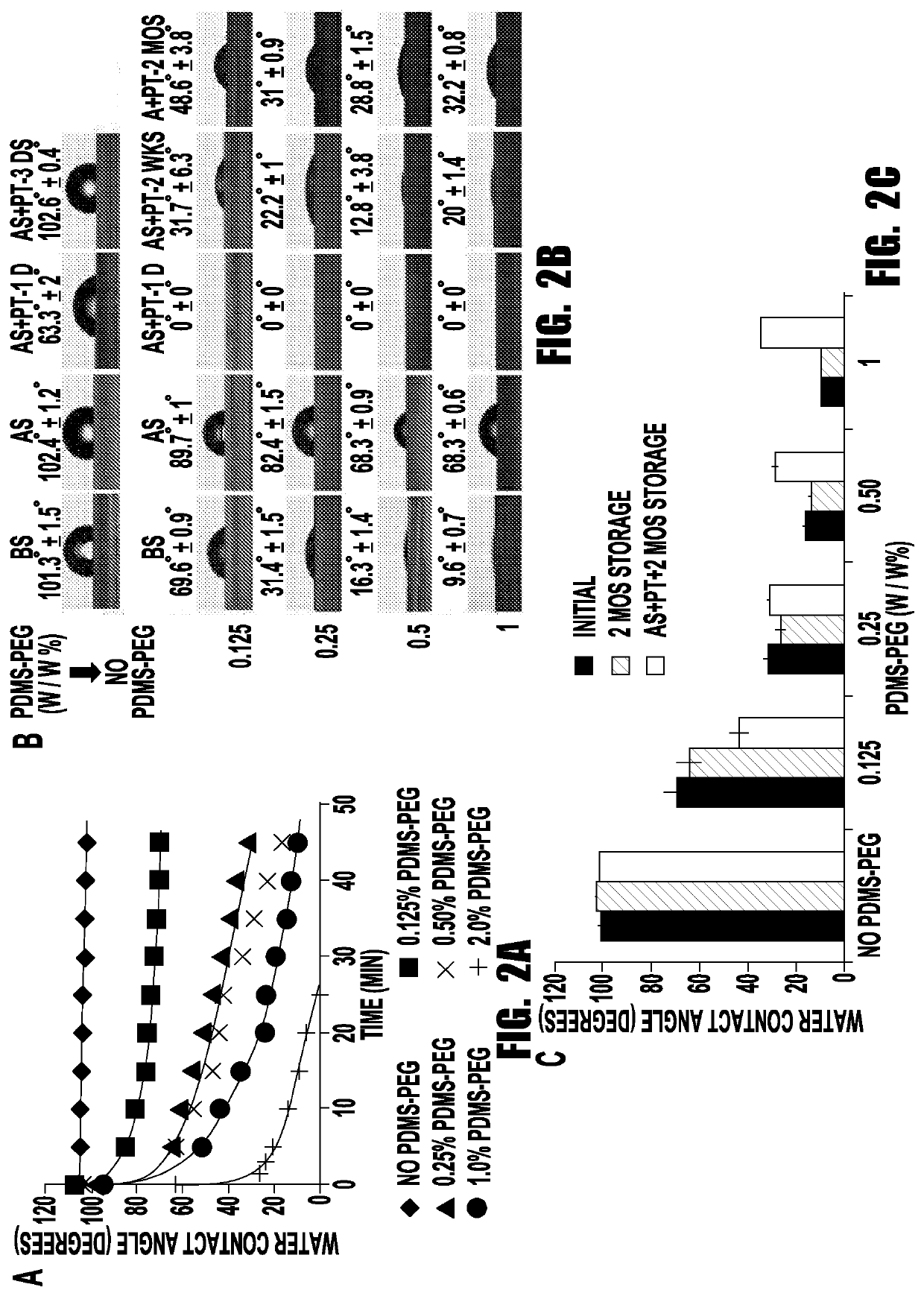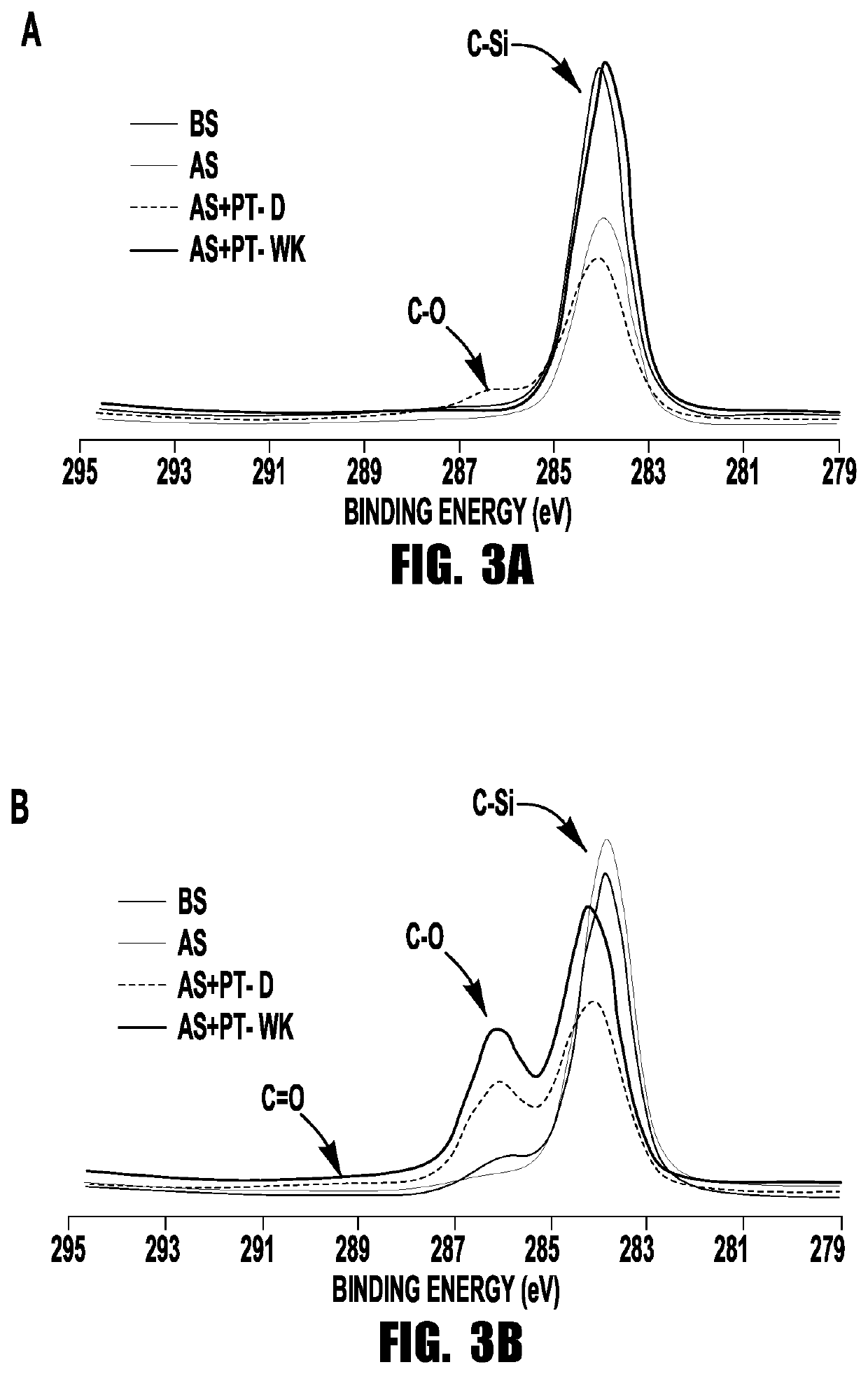Amphiphilic surface-segregating polymer mixtures
a polymer mixture and amphiphilic surface technology, applied in the field of amphiphilic surface segregation polymer mixtures, can solve the problems of limiting the use of pdms and non-specific adsorption of proteins, and achieve the effects of reducing non-specific protein adsorption, high hydrophobicity, and improving hydrophilicity
- Summary
- Abstract
- Description
- Claims
- Application Information
AI Technical Summary
Benefits of technology
Problems solved by technology
Method used
Image
Examples
example
Simple Surface Modification of Poly(dimethylsiloxane) via Surface Segregating Smart Polymers for Biomicrofluidics
[0049]This example demonstrates a useful approach to improve the hydrophilicity of PDMS surfaces by adding a PDMS-PEG block copolymer (BCP) at concentrations between 0.25-2%, during PDMS premixing and before curing. The rest of the device manufacture process is conducted with no further changes, enabling this surface modification approach to be directly plugged into existing protocols. Compared to other additives that have been explored to date the utilization of PDMS-PEG block copolymer provides better compatibility between the additive and PDMS, keeping the device optically clear at concentrations up to 0.25%. These copolymers segregate to the surface when exposed to water / aqueous solutions, which renders the surface hydrophilic, as demonstrated by dynamic water contact angle (WCA) measurements. It also reduces non-specific adsorption of proteins (albumin, lysozyme and ...
PUM
| Property | Measurement | Unit |
|---|---|---|
| water contact angle | aaaaa | aaaaa |
| static contact angle | aaaaa | aaaaa |
| static contact angle | aaaaa | aaaaa |
Abstract
Description
Claims
Application Information
 Login to View More
Login to View More - R&D
- Intellectual Property
- Life Sciences
- Materials
- Tech Scout
- Unparalleled Data Quality
- Higher Quality Content
- 60% Fewer Hallucinations
Browse by: Latest US Patents, China's latest patents, Technical Efficacy Thesaurus, Application Domain, Technology Topic, Popular Technical Reports.
© 2025 PatSnap. All rights reserved.Legal|Privacy policy|Modern Slavery Act Transparency Statement|Sitemap|About US| Contact US: help@patsnap.com



